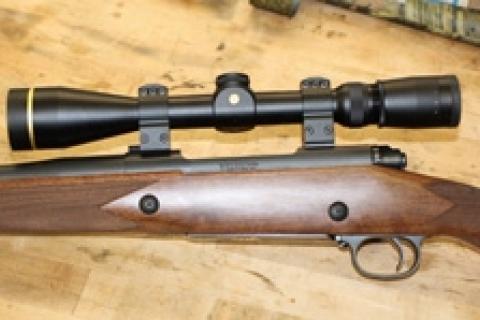
There's no other activity I have found that makes me more critical of a rifle than when I'm sitting in a deer stand. Oh, the quest for the perfect rifle.
 |
| There are many components that make up the perfect rifle. |
I've owned at one time or another more than 75 centerfire rifles, and while I have gotten close to owningor building the perfect hunting rifle, I finally traded or sold it to someone willing to give me more for it than I thought it was worth.I admit I'm a tad picky and demand performance, but still there are quite a lot of characteristics I'm willing to entertain.
Caliber Options
When selecting a caliber, first decide what the rifle's intended use will be: a single use, like deer, or an all-around rifle.
For deer, nearly any rifle .24 caliber or larger will suffice and meet most legal requirements, though personally, I prefer a .264 diameter or larger with a minimum of 125 grain bullet. For an all-around cartridge, the .30 caliber magnums are tough to beat, but I also like the .338 Win Mag. If Africa is an option, I would gravitate to the .375 H&H.
Push Feed vs. Control Round Feed
Choosing whether or not the fresh cartridge being fed into the chamber is controlled or pushed is mainly a matter of personal preference. In the lower 48 states, I have no qualm hunting with one of the fine push feed rifles, the Remington 700, Browning X-Bolt or Weatherby Mark V, but if hunting game that hunts back, then I would choose a control round feed like the Winchester Model 70 or Ruger Model 77.
Wood vs. Synthetic
I prefer wood stocks. I've hunted with a few rifles bedded in synthetic, and I find them cold and unnatural feeling. The only instance I can think of choosing a synthetic stock over a wood stock is for extreme weight reduction. One option that seems to suit both sides of the stock preference debate is laminated stocks. The thin layers of dyed wood are laminated under pressure and make a very strong stock. Though it is heavier than many synthetics it holds up well to nearly all weather conditions thrown at it, but keeps the warmth and feel of a wood stock.
Optics
I was taught at a young age if you are spending $500 on a rifle spend at least $500 on a scope. I've used inexpensive scopes on rifles and always eventually wished I hadn't.
Leupold, Burris, and Nikon make a great product but by no means is this a complete list.
Bases and Rings
Alright, I'm guilty of being a bit prejudice when it comes to scope rings and bases, too. I like steel. Aluminum has its place, but not on any of my rifles. The steel Weaver type bases or the military version Picatinny are good bases, as good as any. For the rifleperson looking for a bit fancier ring the Warne or Talley rings are vertically split and give a rifle a very distinctive look.
No matter if you are looking for wood or synthetic, push feed or control round feed, part of the fun is looking for the perfect rifle.
- 3885 views

